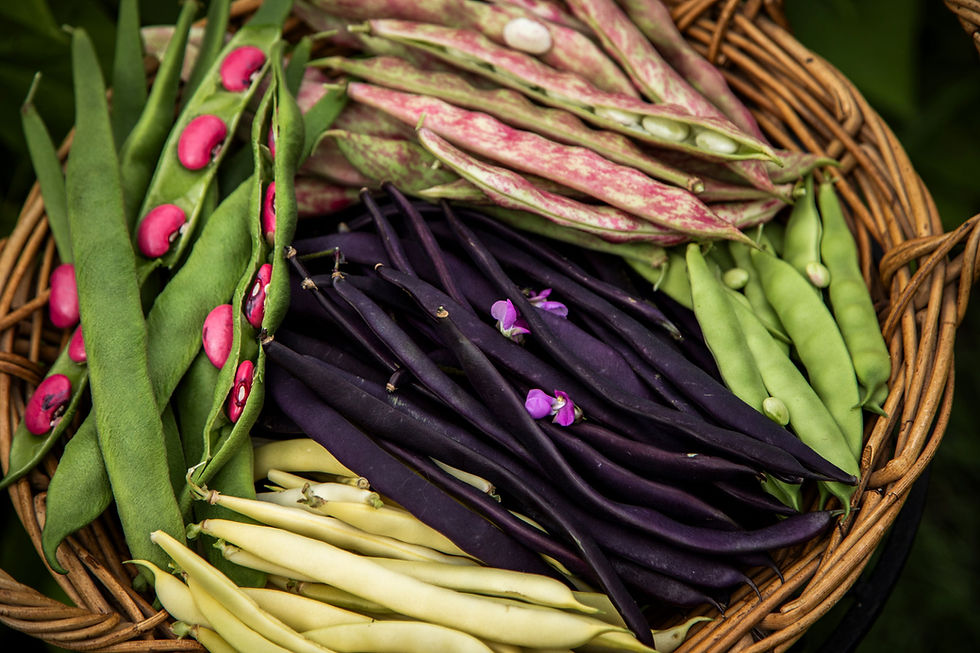Bicolour Sweet Corn
- Annemarie Bolduc

- Mar 21, 2022
- 3 min read
Updated: 5 days ago
The story of a Québécoise bringing the “épluchette” tradition to her backyard in Oz.

In my previous article "Corn Épluchette", I shared about the Québec traditional corn on the cob gatherings and the delicious bicolour variety we bought from farm road stalls at the end of the season. Cornfields are everywhere in Québec, especially where I lived as a teenager on the flat lands of Montréal’s South Shore. Here in Australia, corn cobs are always on supermarket shelves, but they’re not as common at our High Country farmers’ markets. In recent seasons, following years of drought and bushfires, the weather was mild, with plenty of rain. It almost felt like Québec summers, and I managed to grow them in my garden.
Corn on the cob, a Québec summer tradition • Photo © Bottle and Brush Studio 2019-22
MY CORN PATCH EXPERIMENTS Each year I sown different varieties, but the champions were "Snow Gold" and "Honey and Cream" bicolour corn seeds, which are just like the most popular sweet corn in the Québec corn season. I grow them in one of my front lawn patches, paired with climbing snap beans as companions. Thanks to the beans, the sun, wind, plenty of rain from La Nina, and perhaps a water leak one year (from a house water pipe connection near the patch...), my corn thrived! There were no bugs (compared to my first trials in other patches), and the tender white and yellow kernels beautifully covered the whole cobs. This variety produced only one cob per plant, so harvests were small, but the flavour was unbeatable. My Aussie husband swore it was the best corn he had ever eaten! For me, the reward was simple: just boiling the fresh cobs and serving them straight with butter and salt, exactly the way we do in Québec.
Enjoying some freshly picked corn • Photography © Bottle and Brush Studio 2022
THE “THREE SISTERS” TRADITION
Corn, beans, and squash were grown together by Indigenous peoples of the Americas in a system known as the “Three Sisters.” Each plant supports the others: corn as a natural trellis, beans enriching the soil with nitrogen, and squash shading the ground to keep moisture in. I was inspired to try this after visiting Wendake, a Huron-Wendat Nation village in Québec. Space-wise, it was a bit tricky to make in my backyard, as corn is best if grown in blocks to pollinate with the wind. The wind also sounds lovely passing through the plant, but if the wind is too strong, a small block of the tall plants (that can reach 2.5 meters and topple easily) could be damaged. I still made a small patch with the "two sisters" and used rope to tighten them after one had fallen following strong winds... The beans growing on the natural trellis of the corn plants are so productive and look so great together on my front lawn! I expanded my patch, and the next season, I'm planning the complete trio with squashes.
The two sisters corn and beans • Photography © Bottle and Brush Studio 2021-22
COOKING TIPS
• Fresh sweet corn cobs can be boiled, steamed, or grilled.
• The French Canadian way is simple and festive - perfect for a summer party. Kids or guests enjoy the peeling, and the husked cobs go straight into boiling water for 7 minutes (it may be debatable, but that is my family rule!). Once cooked, they're rubbed on a block of butter while still warm and sprinkled with table salt. I sometimes use a pinch of my homemade salt blends, like Garlic and Herb salt.
• In Québec’s colder seasons, corn kernels from tins or frozen packs are one of the three essential ingredients of the traditional shepherd’s pies. I've made a delicious version using fresh corn, beans and homegrown potatoes (see the Harvest Parmentier recipe).
• Kernels can be removed from the cobs by hand or with a knife.
• If you keep chooks, leave them the end bits as a treat!
Everyone is enjoying fresh sweet corn • Photography © Bottle and Brush Studio 2021-22
Find more about the Three Sisters and Québec-style corn on the cob recipe in my Québec Kitchen Abroad cookbook. Follow @snowyfoodie and subscribe to my newsletter for updates and offers!

Check out related posts, recipes and inspirations:




































